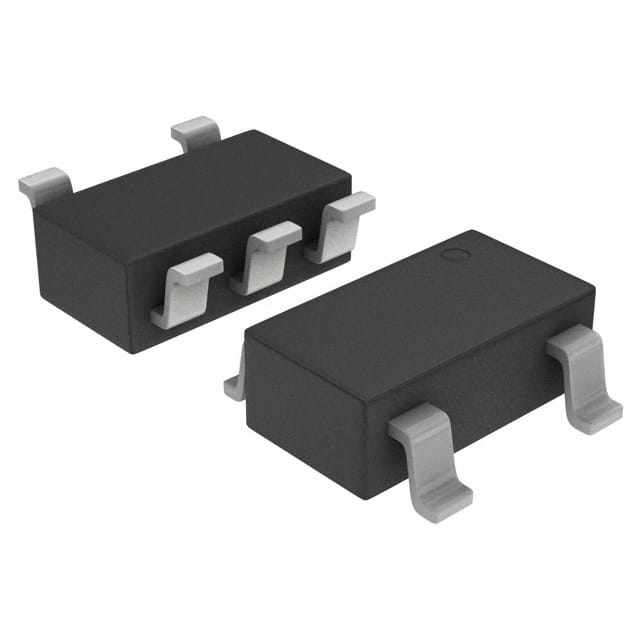Xem thông số kỹ thuật để biết chi tiết sản phẩm.

NCP303LSN13T1G - English Editing Encyclopedia Entry
Product Overview
Category
The NCP303LSN13T1G belongs to the category of voltage detectors.
Use
This product is primarily used for monitoring and detecting voltage levels in electronic circuits.
Characteristics
- Low power consumption
- High accuracy
- Wide operating voltage range
- Small package size
- Fast response time
Package
The NCP303LSN13T1G is available in a small SOT-23-5 package, which is suitable for space-constrained applications.
Essence
The essence of the NCP303LSN13T1G lies in its ability to accurately monitor voltage levels and provide reliable detection in various electronic circuits.
Packaging/Quantity
This product is typically packaged in reels or tubes, with a quantity of 3000 units per reel/tube.
Specifications
- Operating Voltage Range: 1.6V to 6.0V
- Threshold Voltage Options: Various threshold voltage options available (e.g., 2.5V, 3.0V, 3.3V)
- Quiescent Current: Less than 1µA
- Output Type: Active low or active high
- Response Time: Typically less than 10µs
- Temperature Range: -40°C to +85°C
Detailed Pin Configuration
The NCP303LSN13T1G has a total of five pins:
- VDD: Power supply input pin.
- GND: Ground reference pin.
- OUT: Output pin that provides the voltage detection status.
- NC: No connection pin.
- TRIP: Trip point selection pin for setting the desired threshold voltage.
Functional Features
- Undervoltage Detection: The NCP303LSN13T1G can accurately detect when the voltage falls below a specified threshold.
- Hysteresis: The device incorporates hysteresis to prevent false triggering due to voltage fluctuations near the threshold level.
- Low Power Consumption: With a quiescent current of less than 1µA, this voltage detector minimizes power consumption in battery-powered applications.
- Fast Response Time: The NCP303LSN13T1G provides a quick response time of typically less than 10µs, ensuring timely detection and response to voltage changes.
Advantages and Disadvantages
Advantages
- High accuracy in voltage detection
- Wide operating voltage range allows for versatile use
- Small package size enables integration into space-constrained designs
- Low power consumption prolongs battery life
- Fast response time ensures prompt detection and response to voltage changes
Disadvantages
- Limited threshold voltage options available
- Lack of adjustable hysteresis settings
Working Principles
The NCP303LSN13T1G operates based on a voltage comparator principle. It compares the input voltage with the internally set threshold voltage. When the input voltage falls below the threshold, the output changes state, indicating an undervoltage condition.
Detailed Application Field Plans
The NCP303LSN13T1G finds application in various fields, including but not limited to:
- Battery-Powered Devices: Used to monitor battery voltage levels and trigger actions when the voltage drops below a certain threshold.
- Power Supply Units: Employed to detect undervoltage conditions in power supply circuits and initiate appropriate protective measures.
- Industrial Control Systems: Integrated into control systems to monitor voltage levels and ensure stable operation of critical components.
- Automotive Electronics: Utilized in automotive applications to monitor battery voltage and trigger warning indicators or shutdown procedures in case of low voltage.
Detailed and Complete Alternative Models
- NCP303LSN30T1G: Similar to NCP303LSN13T1G but with a threshold voltage of 3.0V.
- NCP303LSN25T1G: Similar to NCP303LSN13T1G but with a threshold voltage of 2.5V.
- NCP303LSN33T1G: Similar to NCP303LSN13T1G but with a threshold voltage of 3.3V.
These alternative models provide flexibility in selecting the desired threshold voltage for specific applications.
Word count: 511 words
Liệt kê 10 câu hỏi và câu trả lời thường gặp liên quan đến ứng dụng NCP303LSN13T1G trong giải pháp kỹ thuật
Sure! Here are 10 common questions and answers related to the application of NCP303LSN13T1G in technical solutions:
Q1: What is NCP303LSN13T1G? A1: NCP303LSN13T1G is a voltage supervisor IC (Integrated Circuit) that monitors the power supply voltage and provides a reset signal when it falls below a certain threshold.
Q2: What is the operating voltage range of NCP303LSN13T1G? A2: The operating voltage range of NCP303LSN13T1G is typically between 0.4V and 5.5V.
Q3: How does NCP303LSN13T1G help in technical solutions? A3: NCP303LSN13T1G helps ensure stable operation of electronic systems by monitoring the power supply voltage and generating a reset signal when it drops below a specified level, preventing erratic behavior or data corruption.
Q4: Can NCP303LSN13T1G be used in battery-powered applications? A4: Yes, NCP303LSN13T1G can be used in battery-powered applications as it operates within a wide voltage range and consumes very low quiescent current.
Q5: What is the typical reset threshold voltage of NCP303LSN13T1G? A5: The typical reset threshold voltage of NCP303LSN13T1G is 3.08V.
Q6: Does NCP303LSN13T1G have an adjustable reset threshold? A6: No, NCP303LSN13T1G has a fixed reset threshold voltage and does not offer adjustment options.
Q7: Can NCP303LSN13T1G tolerate voltage spikes or transients? A7: Yes, NCP303LSN13T1G has built-in hysteresis and can tolerate voltage spikes or transients without generating false reset signals.
Q8: What is the typical response time of NCP303LSN13T1G? A8: The typical response time of NCP303LSN13T1G is around 20µs.
Q9: Can NCP303LSN13T1G be used in automotive applications? A9: Yes, NCP303LSN13T1G is suitable for automotive applications as it meets the AEC-Q100 Grade 1 qualification standards.
Q10: Does NCP303LSN13T1G have any additional features? A10: Yes, NCP303LSN13T1G includes a manual reset input and an open-drain output, allowing for flexibility in system design and integration.
Please note that these answers are based on general information about NCP303LSN13T1G and may vary depending on specific datasheet specifications and application requirements.

